Risk Assessment of Pollutant Residues in Aquatic Products and Aquaculture Environments
A special issue of Fishes (ISSN 2410-3888).
Deadline for manuscript submissions: closed (30 June 2024) | Viewed by 2903
Special Issue Editor
Special Issue Information
Dear Colleagues,
According statistics from the Food and Agriculture Organization of the United Nations, from 1970 to 2011, the proportion of global aquatic production of the total fishery production increased from 3.8% to 41.2%. The increase in aquatic production stems from the strong progress of the aquaculture industry. However, with the overloading of aquaculture water bodies, a large amount of residual feed, fertilizers, metabolic products and other waste is generated within aquaculture water bodies, causing pollution to the aquaculture environment. On a global scale, aquatic products account for about 10% of the human diet, providing a large amount of nutrients for humans. However, aquatic products produced in overloaded aquaculture environments are rich in pollutants such as antibiotics and heavy metals, which directly affect the quality and safety of aquatic products and pose health risks to humans. The structural characteristics of different pollutants within the aquaculture environment, their enrichment and transformation pathways in aquatic products, toxic effects after ingestion into the human body and physiological hazards are different. The current topic aims to collect original and review papers, study the sources and distribution of one or more pollutants in aquaculture environments, their enrichment and transformation in aquatic products, toxic effects, toxicity mechanisms and health risks after environmental exposure and ingestion, as well as the related monitoring techniques and risk assessment methods.
Dr. Chao Song
Guest Editor
Manuscript Submission Information
Manuscripts should be submitted online at www.mdpi.com by registering and logging in to this website. Once you are registered, click here to go to the submission form. Manuscripts can be submitted until the deadline. All submissions that pass pre-check are peer-reviewed. Accepted papers will be published continuously in the journal (as soon as accepted) and will be listed together on the special issue website. Research articles, review articles as well as short communications are invited. For planned papers, a title and short abstract (about 100 words) can be sent to the Editorial Office for announcement on this website.
Submitted manuscripts should not have been published previously, nor be under consideration for publication elsewhere (except conference proceedings papers). All manuscripts are thoroughly refereed through a single-blind peer-review process. A guide for authors and other relevant information for submission of manuscripts is available on the Instructions for Authors page. Fishes is an international peer-reviewed open access monthly journal published by MDPI.
Please visit the Instructions for Authors page before submitting a manuscript. The Article Processing Charge (APC) for publication in this open access journal is 2600 CHF (Swiss Francs). Submitted papers should be well formatted and use good English. Authors may use MDPI's English editing service prior to publication or during author revisions.
Keywords
- aquaculture environments
- pollutant residues
- risk assessment





